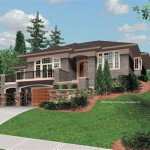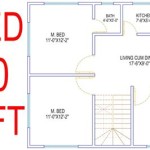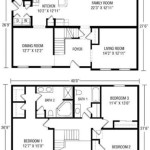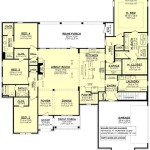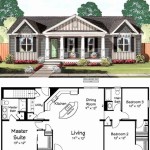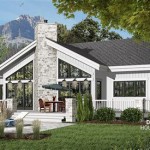Queen Anne house plans serve as blueprints for constructing or renovating dwellings that embody the distinctive architectural style prevalent in the late 19th century. These blueprints provide detailed instructions regarding the layout, dimensions, and ornamentation of a structure, ensuring the seamless execution of a Queen Anne design.
Queen Anne architecture is characterized by its asymmetrical facades, steeply pitched roofs, decorative spindlework, and elaborate porches. One notable example of a Queen Anne house is the Carson Mansion in Eureka, California, which showcases the intricate details and exuberant ornamentation typical of this architectural style.
Within this article, we will delve into the intricacies of Queen Anne house plans, exploring their essential elements, design considerations, and the historical influences that shaped their development. By understanding the principles underlying these plans, you can gain valuable insights into the creation of charming and timeless abodes.
Queen Anne house plans embody the essence of Victorian-era architecture, boasting a unique blend of intricate details and asymmetrical charm.
- Asymmetrical facades
- Steeply pitched roofs
- Decorative spindlework
- Elaborate porches
- Bay windows
- Turret-like towers
- Ornate gables
- Stained glass windows
- Wrap-around verandas
- Grand staircases
These elements combine to create visually stunning and highly distinctive homes that exude an air of timeless elegance.
Asymmetrical facades
Asymmetrical facades are a defining characteristic of Queen Anne house plans. They create a visually dynamic and eye-catching exterior that sets these homes apart from more traditional symmetrical designs.
- Varying rooflines: Queen Anne houses often feature multiple rooflines that intersect at different angles, creating a complex and visually interesting roofline. This asymmetry adds depth and character to the facade.
- Off-center entrances: The main entrance to a Queen Anne house is often offset to one side of the facade, rather than being centrally located. This creates a more dynamic and welcoming entryway, as guests are drawn to the unexpected placement of the door.
- Projecting bays and wings: Queen Anne houses frequently incorporate projecting bays and wings that extend outward from the main body of the house. These projections add depth and interest to the facade, and they can also be used to create additional living space or to highlight specific features of the home, such as a bay window or a turret.
- Varied window shapes and sizes: Queen Anne houses are known for their elaborate and varied window treatments. Windows may be different shapes and sizes, and they may be arranged in asymmetrical patterns to create a visually dynamic facade.
Overall, the asymmetrical facades of Queen Anne house plans create a sense of movement and energy that is both visually appealing and architecturally distinctive.
Steeply pitched roofs
Steeply pitched roofs are another hallmark of Queen Anne house plans. These roofs serve both a functional and aesthetic purpose, providing both protection from the elements and a distinctive visual appeal.
Protection from the elements: The steep pitch of Queen Anne roofs helps to shed water and snow quickly and efficiently, protecting the home from damage. This is especially important in areas with heavy rainfall or snowfall.
Aesthetic appeal: The steep pitch of Queen Anne roofs also creates a visually striking and dramatic silhouette. The high peaks and sharp angles add height and presence to the home, making it an eye-catching addition to any neighborhood.
Gable and dormer windows: Queen Anne roofs often feature multiple gables and dormers, which are small, roofed structures that project from the roof. These gables and dormers add visual interest and can also be used to provide additional light and ventilation to the attic or upper floors of the home.
Roofing materials: Queen Anne roofs are typically covered with slate, tile, or metal. These materials are durable and long-lasting, and they can add to the overall aesthetic appeal of the home.
Decorative spindlework
Decorative spindlework is a type of architectural ornamentation that is commonly found on Queen Anne houses. It consists of thin, turned spindles that are arranged in a variety of patterns to create intricate and visually appealing designs.
Turned spindles: Spindles are typically made of wood, and they are turned on a lathe to create a variety of shapes and sizes. The most common type of spindle used in Queen Anne architecture is the baluster, which is a short, vase-shaped spindle with a bulbous center and a tapered top and bottom.
Patterns: Spindles can be arranged in a variety of patterns to create different effects. Some common patterns include:
- Linear patterns: Spindles can be arranged in straight lines, either vertically or horizontally. This creates a simple and elegant effect.
- Curved patterns: Spindles can be arranged in curved patterns to create more elaborate and dynamic designs.
- Geometric patterns: Spindles can be arranged in geometric patterns, such as squares, triangles, and diamonds. This creates a more formal and structured effect.
Location: Decorative spindlework can be found in a variety of locations on Queen Anne houses, including:
- Porches: Spindles are often used to create decorative railings on porches and verandas.
- Gables: Spindles can be used to create decorative gables, which are the triangular sections of wall at the end of a roof.
- Windows: Spindles can be used to create decorative window surrounds, which can add a touch of elegance to any home.
Overall, decorative spindlework is a beautiful and versatile architectural element that can add a touch of Victorian charm to any Queen Anne house.
Elaborate porches
Wraparound porches
Wraparound porches are a signature feature of many Queen Anne houses. These porches extend around at least two sides of the house, and they often feature multiple levels and decorative details.
Wraparound porches provide a variety of benefits, including:
- Extended living space: Wraparound porches can significantly increase the living space of a home, providing a place to relax, entertain, or simply enjoy the outdoors.
- Protection from the elements: Wraparound porches can provide protection from the sun, rain, and wind, making them a great place to enjoy the outdoors in any weather.
- Increased curb appeal: Wraparound porches add a touch of Victorian charm to any home, making them a popular choice for homeowners who want to increase the curb appeal of their property.
Multi-level porches
Multi-level porches are another common feature of Queen Anne houses. These porches are typically arranged with a lower level that wraps around the front of the house and an upper level that is accessed by a staircase.
Multi-level porches provide a number of advantages, including:
- Increased visual interest: Multi-level porches add visual interest to a home, creating a more dynamic and inviting facade.
- Additional outdoor space: Multi-level porches provide additional outdoor space, which can be used for a variety of activities, such as relaxing, entertaining, or gardening.
- Improved views: The upper level of a multi-level porch often offers improved views of the surrounding area.
Decorative details
Queen Anne porches are often adorned with a variety of decorative details, such as:
- Turned spindles: Turned spindles are a type of architectural ornamentation that is commonly used on Queen Anne porches. These spindles are typically made of wood, and they are turned on a lathe to create a variety of shapes and sizes.
- Gingerbread trim: Gingerbread trim is a type of decorative woodwork that is often used on Queen Anne porches. This trim is typically made of thin, scrolled pieces of wood that are cut into intricate patterns.
- Stained glass windows: Stained glass windows are a beautiful and unique way to add a touch of color and elegance to a Queen Anne porch.
These decorative details help to create a truly unique and charming outdoor space that is perfect for relaxing, entertaining, or simply enjoying the outdoors.
Bay windows
Bay windows are a type of window that projects outward from the wall of a building, creating a small alcove or bay. They are often used in Queen Anne houses to add visual interest and to provide additional light and space.
Bay windows can be of various shapes and sizes, but they are typically composed of three or more windows that are joined together at an angle. The most common type of bay window is the three-sided bay, which projects outward from the wall at a 45-degree angle. Other popular shapes include the five-sided bay, which projects outward at a 30-degree angle, and the polygonal bay, which has more than five sides.
Bay windows can be located on any side of a house, but they are most commonly found on the front or side of the building. They can be used to highlight a particular feature of the home, such as a fireplace or a staircase, or they can simply be used to add visual interest to the facade.
Bay windows offer a number of advantages, including:
- Increased natural light: Bay windows allow more natural light to enter a room, making it brighter and more inviting.
- Additional space: Bay windows create a small alcove or bay that can be used for a variety of purposes, such as seating, storage, or a reading nook.
- Improved views: Bay windows offer improved views of the surrounding area, making them a great choice for rooms that overlook a garden or a scenic vista.
- Increased curb appeal: Bay windows add a touch of Victorian charm to any home, making them a popular choice for homeowners who want to increase the curb appeal of their property.
Overall, bay windows are a beautiful and functional architectural element that can add a touch of Victorian charm to any Queen Anne house.
Turret-like towers
Turret-like towers are a distinctive feature of many Queen Anne houses. These towers are typically round or octagonal in shape, and they often feature a conical or pyramidal roof. Turret-like towers can be used for a variety of purposes, including:
- Observation: Turret-like towers can provide a panoramic view of the surrounding area, making them ideal for use as lookout points.
- Defense: In the past, turret-like towers were often used for defensive purposes. They could be used to store weapons and supplies, and they could also be used as a vantage point for archers or other defenders.
- Decoration: Turret-like towers can also be used to add visual interest to a home. They can be decorated with a variety of architectural details, such as spindles, gingerbread trim, and stained glass windows.
- Additional space: Turret-like towers can be used to create additional living space. They can be used as a guest room, a study, or even a small library.
Overall, turret-like towers are a versatile and charming architectural element that can add a touch of Victorian charm to any Queen Anne house.
Ornate gables
Ornate gables are a defining feature of Queen Anne house plans. These gables are typically triangular in shape, and they are often adorned with a variety of decorative details, such as spindles, gingerbread trim, and stained glass windows.
Gables serve a number of important functions, including:
- Structural support: Gables help to support the roof of a house. They do this by transferring the weight of the roof to the walls of the house.
- Weather protection: Gables help to protect the roof of a house from the elements. They do this by shedding water and snow away from the roof.
- Ventilation: Gables can help to ventilate a house. They do this by allowing air to circulate through the attic.
- Decoration: Gables can add a touch of Victorian charm to a home. They can be decorated with a variety of architectural details, such as spindles, gingerbread trim, and stained glass windows.
Queen Anne gables are often very elaborate and ornate. They may feature a variety of different shapes and sizes, and they may be decorated with a variety of different materials, such as wood, stone, and metal.
Overall, ornate gables are a beautiful and functional architectural element that can add a touch of Victorian charm to any Queen Anne house. They serve a number of important functions, including structural support, weather protection, ventilation, and decoration.
Stained glass windows
Stained glass windows are a beautiful and unique way to add a touch of color and elegance to any home. They are often used in Queen Anne houses to create a sense of grandeur and to add visual interest to the facade.
- Increased natural light: Stained glass windows allow more natural light to enter a room, making it brighter and more inviting. This is especially beneficial in rooms that are north-facing or that have limited access to natural light.
- Improved privacy: Stained glass windows can provide a degree of privacy while still allowing light to enter a room. This makes them a good choice for bathrooms, bedrooms, and other areas where privacy is desired.
- Enhanced curb appeal: Stained glass windows can add a touch of Victorian charm to any home, making them a popular choice for homeowners who want to increase the curb appeal of their property.
- Historical significance: Stained glass windows were a popular feature of Victorian architecture, and they can add a touch of historical authenticity to a Queen Anne house.
Overall, stained glass windows are a beautiful and functional architectural element that can add a touch of Victorian charm to any Queen Anne house.
Wrap-around verandas
Wrap-around verandas are a signature feature of many Queen Anne houses. These verandas extend around at least two sides of the house, and they often feature multiple levels and decorative details.
- Extended living space: Wrap-around verandas can significantly increase the living space of a home, providing a place to relax, entertain, or simply enjoy the outdoors.
- Protection from the elements: Wrap-around verandas can provide protection from the sun, rain, and wind, making them a great place to enjoy the outdoors in any weather.
- Increased curb appeal: Wrap-around verandas add a touch of Victorian charm to any home, making them a popular choice for homeowners who want to increase the curb appeal of their property.
- Improved ventilation: Wrap-around verandas can help to improve ventilation in a home. They allow air to circulate around the house, which can help to keep the house cool in the summer and warm in the winter.
Overall, wrap-around verandas are a beautiful and functional architectural element that can add a touch of Victorian charm to any Queen Anne house.
Grand staircases
Grand staircases are a defining feature of many Queen Anne houses. These staircases are typically located in the foyer or entry hall, and they often feature elaborate carvings, turned spindles, and stained glass windows.
- Visual impact: Grand staircases make a dramatic statement in any home. They create a sense of grandeur and elegance, and they can add a touch of Victorian charm to any space.
- Increased natural light: Grand staircases often feature large windows that allow natural light to flood into the foyer or entry hall. This can make the space feel brighter and more inviting.
- Improved circulation: Grand staircases can help to improve circulation in a home. They provide a wide and easy path between the first and second floors, which can be especially beneficial in large homes.
- Increased property value: Grand staircases can add value to a home. They are a desirable feature for many buyers, and they can help to make a home more attractive to potential buyers.
Overall, grand staircases are a beautiful and functional architectural element that can add a touch of Victorian charm to any Queen Anne house.










Related Posts

